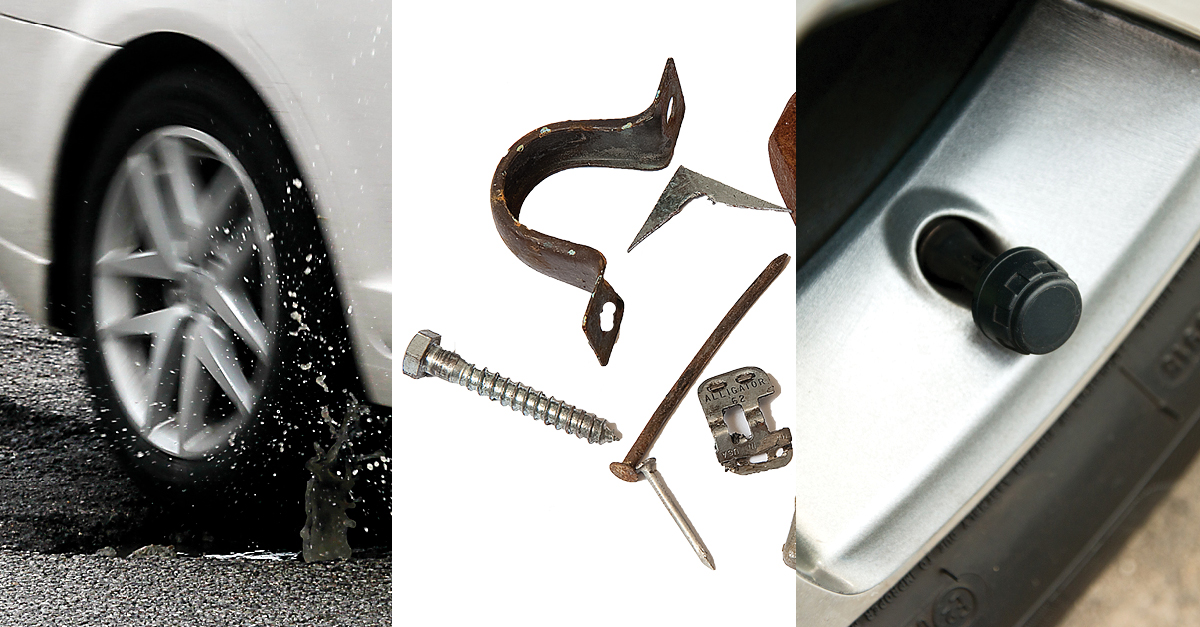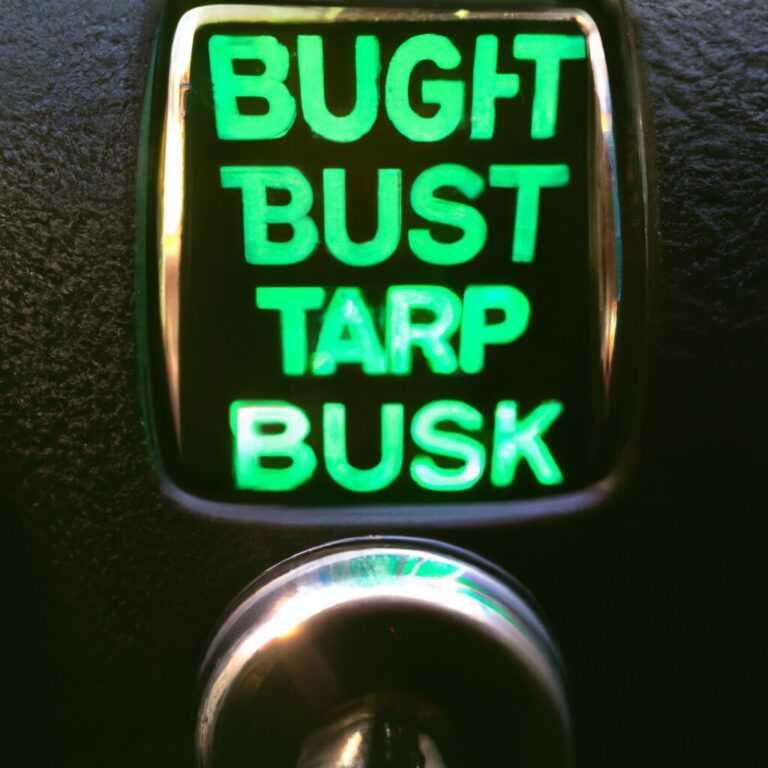How to Fix a Slow Leak in Tire
To fix a slow leak in a tire, start by locating the puncture using soapy water. Then, seal it with a tire repair kit.
Dealing with a slow leak in your tire can be frustrating and inconvenient. Whether you notice a gradual loss of pressure or have to constantly top up your tire, addressing the issue promptly is crucial for your safety on the road.
In this guide, we will walk you through the steps to fix a slow leak in your tire, allowing you to get back on the road quickly and without hassle. By following these simple instructions, you can save time and money on costly repairs and ensure your tire remains in good condition for longer.

Credit: techtirerepairs.com
Causes Of A Slow Leak
A slow leak in a tire can be frustrating and inconvenient, causing you to constantly refill the tire with air. Understanding the causes of a slow leak can help you diagnose and fix the issue promptly, ensuring your safety on the road.
Puncture
A common cause of a slow leak in a tire is a puncture from sharp objects such as nails, screws, or debris on the road. Punctures can create small holes in the tire, allowing air to escape slowly over time.
Damaged Valve Stem
If the valve stem of your tire is damaged, it can result in a slow leak. The valve stem is responsible for sealing air inside the tire and can be affected by wear and tear or physical damage.
Worn Or Cracked Tire
Worn or cracked tires can develop slow leaks due to deterioration of the rubber or damage from road hazards. Over time, the tire’s rubber may become brittle, leading to tiny cracks that allow air to seep out gradually.
Tools And Materials Required
Before fixing a slow leak in your tire, you will need the following tools and materials:
Tire Pressure Gauge
- Used to check the pressure in the tire
- Ensures proper inflation
Soap And Water Solution
- Helps locate the leak
- A simple mixture to identify air bubbles
Tire Repair Kit
- Includes tools for patching the leak
- Essential for fixing minor tire punctures
Air Compressor Or Portable Tire Inflator
- For inflating the tire after fixing the leak
- Ensures proper tire pressure for safety
Locating The Leak
Locating the Leak: Knowing how to locate a leak in your tire is crucial for a quick fix.
Checking Tire Pressure
Inflate tire to proper psi using a pressure gauge to pinpoint where potential leaks could be.
Inspecting The Tire Surface
Look for punctures, cuts, or foreign objects embedded on the tire by visually inspecting.
Using Soap And Water Solution
Apply soapy water on the tire surface and observe for bubbles forming at the location of the leak.

Credit: www.youtube.com
Repairing A Slow Leak
Learn how to fix a slow leak in your tire quickly and easily. Follow these simple steps to repair the leak and get back on the road in no time.
Patch Or Plug For Puncture
“` When dealing with a punctured tire causing a slow leak, a popular solution is to patch or plug the hole. This can be achieved by locating the puncture, and utilizing a tire repair kit to seal the damaged area. By following the manufacturer’s instructions, you can effectively seal the puncture and prevent further air loss. “`htmlReplacing The Valve Stem
“` In some cases, a slow leak may be caused by a faulty or damaged valve stem. If your tire continues losing air despite having no visible punctures, it may be time to consider replacing the valve stem. This simple yet effective solution can resolve the slow leak and restore proper tire pressure. “`htmlUsing Tire Sealant
“` Tire sealant is another option for addressing slow leaks in tires, particularly for those caused by small punctures or leaks. By injecting the sealant into the tire, it can fill holes and gaps, effectively sealing the leak and preventing further air loss. This method can offer a quick and temporary fix for minor leaks. “`htmlReplacing The Tire
“` In cases where the slow leak cannot be effectively repaired through the aforementioned methods, or if the tire is too damaged, replacing the tire may be the most viable solution. By replacing the tire, you can ensure the safety and reliability of your vehicle’s tires, avoiding potential risks associated with prolonged use of a damaged tire.Preventing Future Leaks
Below is an example of an engaging section of a blog post about “How to Fix a Slow Leak in Tire” with a focus on preventing future leaks. “`htmlRegular Tire Maintenance
Regular tire maintenance is crucial in preventing future leaks. Make sure to regularly inspect your tires for signs of damage such as punctures, cracks, or bulges. By conducting visual inspections, you can catch any potential issues early on and take appropriate action before they worsen.
Additionally, it’s essential to keep an eye out for wear and tear on the tire tread. Worn-out tread can increase the risk of leaks and other tire-related problems. To prevent this, regularly measure your tire tread depth using a tread depth gauge. If the tire tread reaches the minimum required depth, consider replacing the tire.
Avoiding Road Hazards
One of the main causes of tire leaks is road hazards such as potholes and debris. Avoiding these hazards as much as possible can significantly reduce the chances of a slow leak. Keep a safe distance from larger vehicles, especially on rough roads where debris is more likely to be present. Additionally, be cautious when driving through construction zones or areas with poor road conditions.
If you do encounter a road hazard, be mindful of any unusual noises or vibrations that may indicate tire damage. If you notice anything out of the ordinary, pull over and inspect your tires carefully. Catching any potential issues early on can prevent further damage and potential leaks.
Monitoring Tire Pressure
Maintaining the proper tire pressure is crucial in preventing leaks. Incorrect tire pressure can cause tire damage, leading to slow leaks over time. Use a quality tire pressure gauge to check your tire pressure regularly, ideally at least once a month.
Refer to your vehicle’s owner manual or the sticker on the driver’s side door jamb for the recommended tire pressure. Inflate your tires to the correct psi to ensure optimal performance and minimize the risk of leaks. Remember to check the tire pressure when the tires are cold for accurate readings.
By following these preventive measures, you can significantly reduce the risk of slow leaks in your tires. Regular maintenance, avoiding road hazards, and monitoring tire pressure are simple yet effective steps that can prolong the lifespan of your tires and ensure your safety on the road.
“` We hope you find this section helpful. Should you have any further questions or need additional assistance, please feel free to reach out to us.
Credit: m.youtube.com
Frequently Asked Questions Of How To Fix A Slow Leak In Tire
Can A Slow Tire Leak Be Fixed?
Yes, a slow tire leak can usually be fixed by repairing the puncture or replacing the valve stem. It’s essential to address the issue promptly to prevent further damage and ensure road safety. Regular tire inspections are recommended to catch leaks early.
How Much Does It Cost To Fix A Slow Leak On A Tire?
Fixing a slow leak on a tire typically costs $20 to $40. Prices may vary depending on the severity of the leak and the type of repair needed.
Is It Ok To Drive On A Tire With A Slow Leak?
Driving on a tire with a slow leak is not recommended as it can lead to decreased tire performance and potential safety risks. It’s best to address the issue promptly and get the tire repaired or replaced by a professional.
Can I Use Tire Sealant For A Slow Leak?
Yes, tire sealant can be used for a slow leak. It can temporarily patch the leak and help maintain tire pressure. However, it’s important to have the tire inspected and repaired by a professional as soon as possible. Using tire sealant is a short-term solution.
How Can I Tell If My Tire Has A Slow Leak?
If you notice your tire losing air over time, it may indicate a slow leak. Check for gradual loss of pressure.
What Causes A Slow Tire Leak?
Common causes of slow leaks include punctures, valve stem issues, bead leaks, and corrosion.
How Do I Find The Source Of A Slow Tire Leak?
To locate the source of a slow tire leak, you can perform a simple water test or use a specialized leak detection solution.
Conclusion
Fixing a slow leak in your tire is essential for safe and efficient driving. By following these simple steps, you can save time and money, while ensuring your safety on the road. Regularly checking your tire pressure and addressing any leaks promptly is crucial for maintaining optimal vehicle performance.
Keep these tips in mind to keep your tires rolling smoothly.

